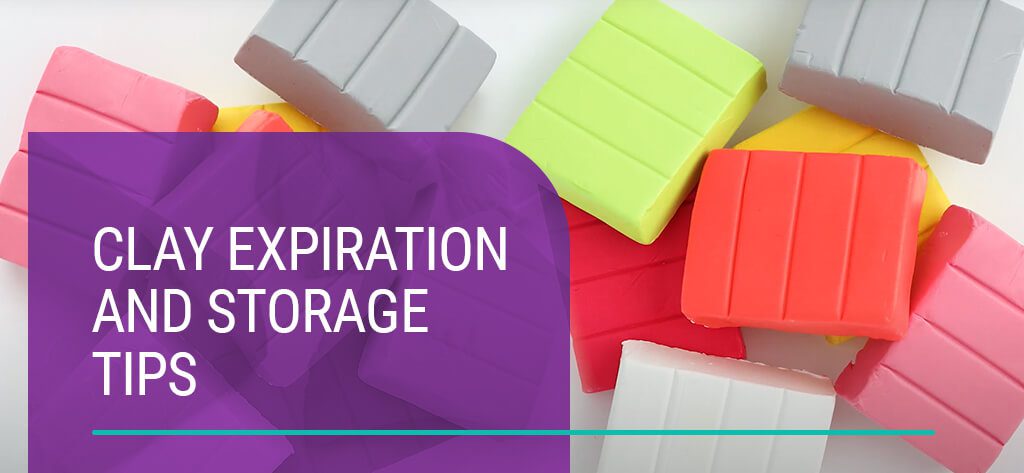
Many everyday products like milk, eggs and bread have a shelf life, which means they’re unusable after a certain amount of time has passed. If you’re a crafter, you probably have the same questions about your materials and how long they last, like polymer clay. In this guide, we’ll discuss the shelf life of this clay and how to properly store it. First, we’ll take a look at how polymer clay is made.
What Are the Ingredients in Polymer Clay?
Polymer clay is essentially a plastic-based compound. This is vitally important when it comes to talking about the shelf life of polymer clay because it means this synthetic clay doesn’t contain ingredients that can “go bad” rapidly. However, you can’t expect your polymer clay to last for decades.
How Polymer Clay Ages
If you keep polymer clay around for a long time without curing it, the clay may become brittle after several years. It dries out gradually, which gives you the opportunity to soften the clay again if you use it soon enough. For instance, some clayers massage a little mineral oil or baby oil into the clay to restore the clay to its normal properties.
Of course, you can depend upon Sculpey® Clay Softener & Thinner on hand to rapidly restore the texture of polymer clay. Just knead Sculpey Clay Softener & Thinner into brittle or crumbly clay for a few minutes. Alternatively, you can use pigment-free Sculpey® Oven-Bake Clay Softener to revive the consistency of any polymer clay.
Hints to Keep in Mind
You can help your polymer clay stay fresh and vibrant practically indefinitely when you follow a few key tips and keep these practices in mind:
- Store polymer clay in the right environment: Be sure to keep your extra Sculpey® in a climate-controlled space. Remember that Proper polymer clay storage is essential to freshness. The clay should be stored in a clay-compatible container in a very cool, dry place, unexposed to the direct rays of the sun. When polymer clay is exposed to high temperatures for extended periods, it will cure. Once cured, it can’t be re-conditioned. We recommend containers or bags made out of polypropylene (PP) plastic. Hint — look for the recycling symbol #5 on the bottom of the container.
- Keep polymer clay in airtight packages like plastic sandwich bags: When polymer clay is exposed to air, the ingredients that keep it soft begin to evaporate. The easiest workaround for this problem is to ensure that your polymer clay is always kept in airtight storage.
- Condition your polymer clay regularly: Let’s say you’re working with some polymer clay over a few weeks. Even if you’re not going to mold or shape it, condition it for a few minutes every couple of days. Then, put it back into an airtight container to help keep it in the best condition.
Does Polymer Clay Have an Expiration Date?
Polymer clay won’t expire in most circumstances. You just have to give it some TLC to make sure it’s ready to go when you’re ready to innovate! Get started on your next project with polymer clay from Sculpey today!



